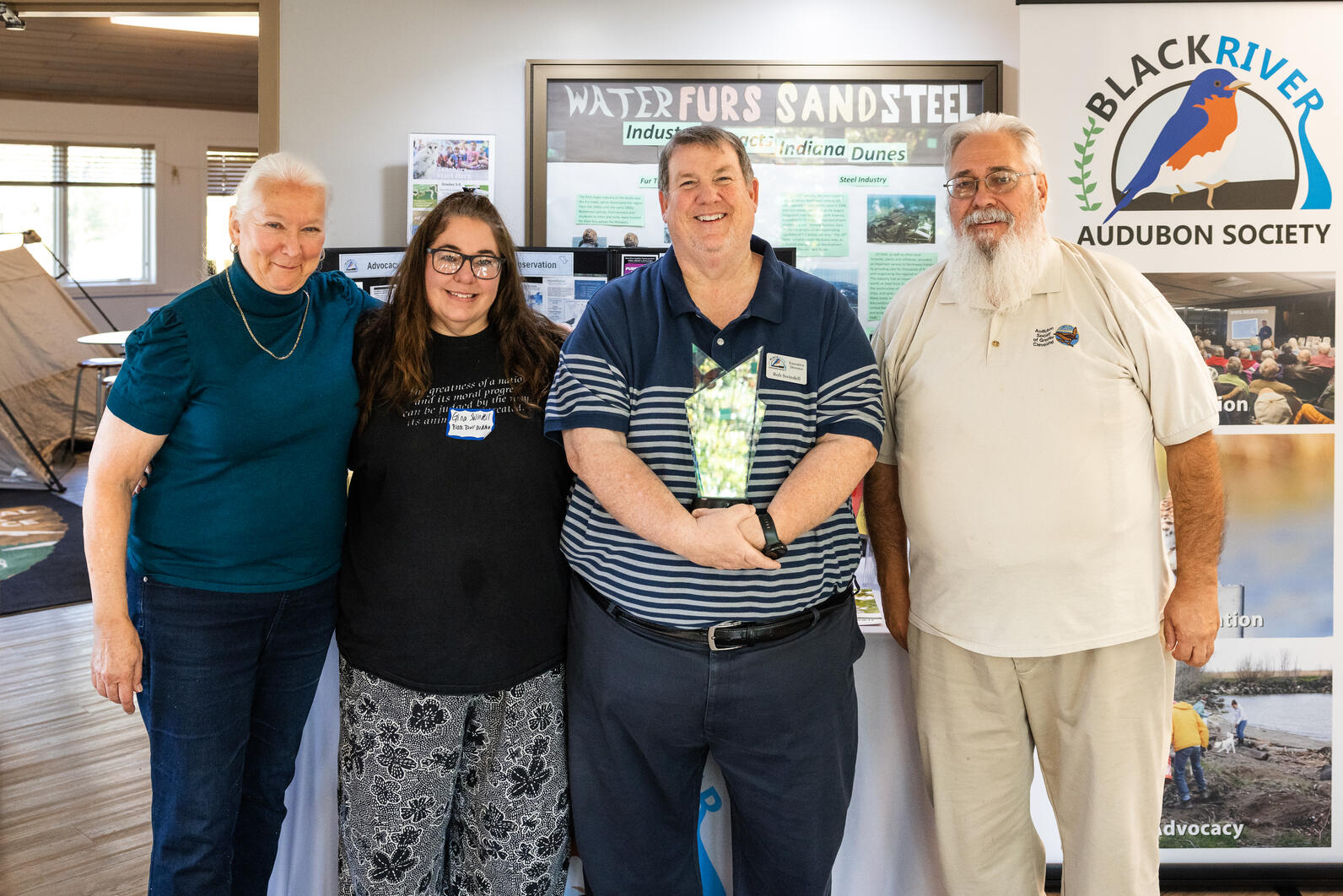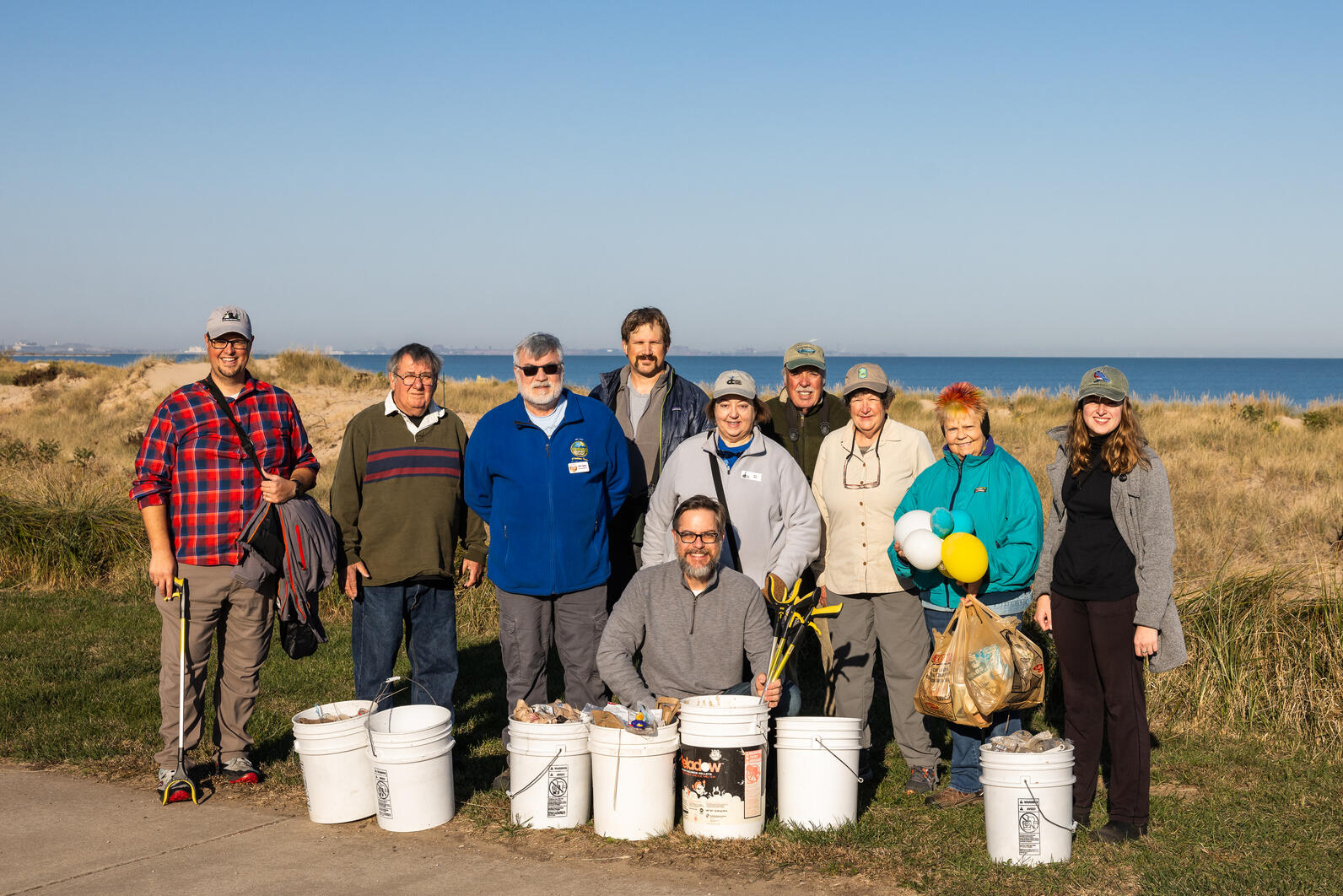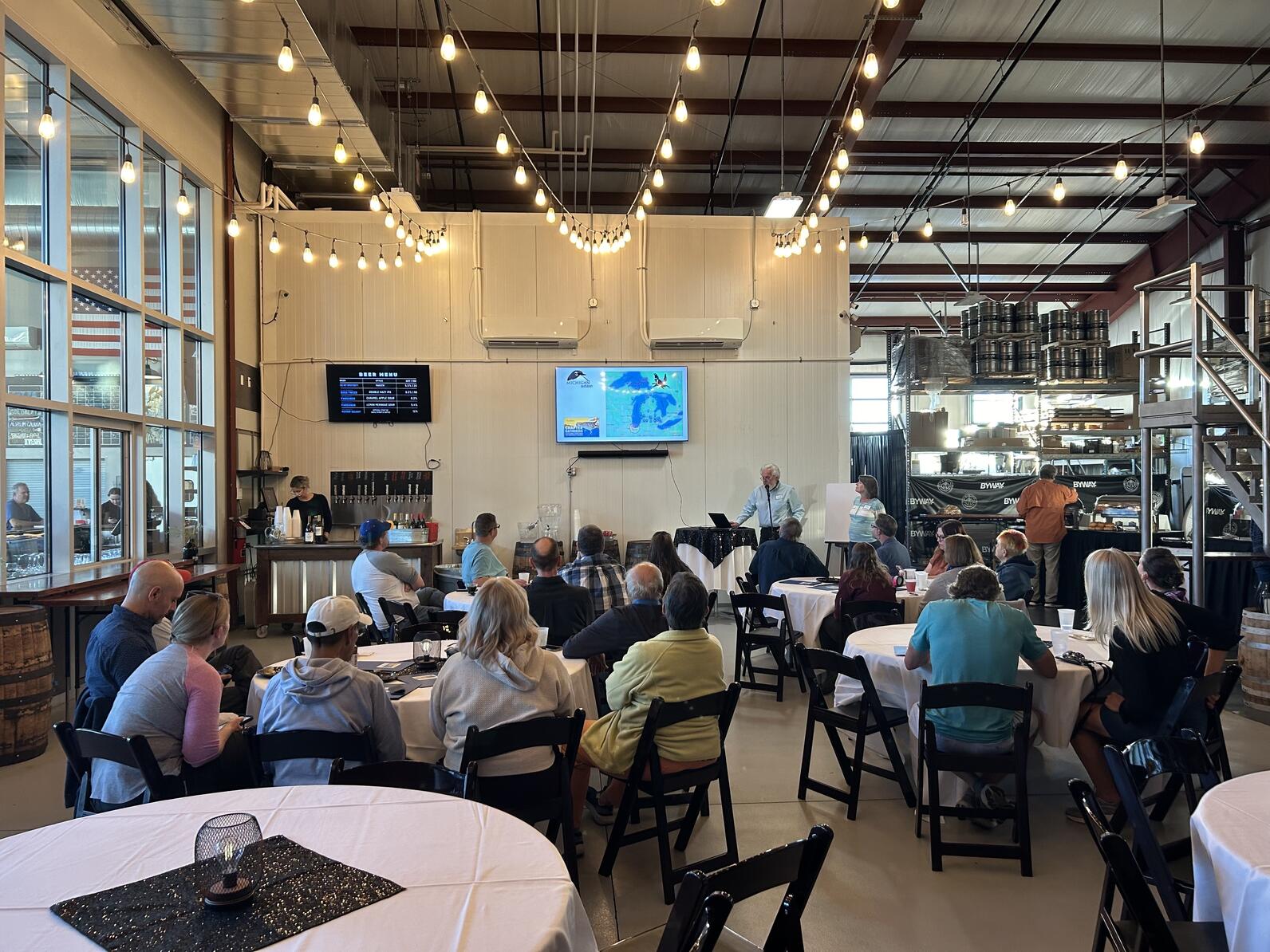(October 31, 2024) -- Byway Brewing in northwest Indiana buzzed with excitement on the evening of Friday, October 18, as Audubon members from across the Great Lakes region mixed and mingled, sharing their birding and travel stories and readying themselves for a game of bird-themed trivia.
Members were gathered for the first night of the 2024 Audubon Great Lakes Chapter Gathering, a three-day event in Gary, Indiana, focused on the critical role collaboration and partnership plays in protecting Great Lakes birds and the places they need.
The Chapter Gathering, which is held every other year, welcomes Great Lakes chapter leaders, members and partners to share with and learn from one another, build connections, and gain access to resources that support their Great Lakes conservation, advocacy and education and outreach work.
This year, more than 40 chapter leaders and members attended the Chapter Gathering. Having chapter leaders come together and share information on their holistic work is critical in helping us fulfill Audubon’s Flight Plan, which is Audubon’s strategic plan for how to respond to the greatest challenges facing birds. We know we cannot halt, and ultimately reverse, the decline of birds across the region without the collaboration and dedication of our incredible chapter network.
Alan Dolan Conservation Advocacy Award

One of the event highlights is presenting the Alan Dolan Great Lakes Conservation Advocacy Award, named in honor of the late Alan Dolan, who severed as the Chapter president of Canton Audubon Society for 30 years and was the regional director for Mississippi Flyway North for National Audubon Society’s board of directors for eight years. The award is presented to an exceptional chapter leader in the Great Lakes region and recognizes incredible leadership in environmental advocacy, community service and dedication to the conservation of the Great Lakes.
This year, we were proud to present the award to Rob Swindell, Executive Director of the Black River Audubon Society, for his work advocating for bird conservation and his commitment to engaging the community in environmental issues.
Under Swindell’s leadership, Black River Audubon Society has made significant strides in environmental education and advocacy, including several successful outreach initiatives. Swindell and Black River Audubon Society were also recognized for leading the installation of the first Motus towers in Lorain County, which monitor bird migration, aiding researchers across the hemisphere.
Swindell’s work is a great example of the kind of impact our Audubon chapter network and partners can have across the region. I want to share a few inspiring words from Swindell’s acceptance speech, during the event.
“I believe our primary responsibility is to get people to care...when enough people care, politicians, developers, and corporations take meaningful action. We must continue to teach, inspire, and give others the opportunity to fall in love with the world as we have.”
Sharing the Importance of Working Together

With fall colors in bloom, each morning was spent birding or doing a clean-up along the Lake Michigan shoreline, followed by presentations from chapter leaders and Audubon staff on the benefits of collaborating together to advance bird conservation.
Together, there were more than 20 presentations – a testament to the amount of collaborative work taking place across the region. As just a few highlights, I want to share a few examples of this important work, which were shared during the event:

- Laughing Whitefish Bird Alliance (MI) demonstrated their annual Birds & Brews jeopardy-style trivia game, which brings bird lovers together in a fun environment to connect and learn about opportunities to protect the places birds need. This Birds & Brews event led by the chapter is co-hosted by Audubon Great Lakes’ MI Birds program, an outreach and education program presented in partnership with the Michigan Department of Natural Resources. MI Birds works to raise awareness of the importance of conserving the public lands Michigan’s birds rely on. Chapters are vital to this work, and many participate as MI Birds Ambassadors, helping to share the importance of public land conservation through Birds & Brews events, guided birding tours, and more. Learn more about this work.
- Representatives from Northeastern Wisconsin Bird Alliance, University of Wisconsin – Green Bay, Oneida Nation, and Audubon Great Lakes shared how they engage a group of volunteer bird monitors to contribute bird data on 3,000 acres of grasslands, marshes and forests that Oneida Nation recently restored. This data has helped inform Oneida’s management decisions and helped measure the success of their restoration work. Learn more about this important partnership. In a separate presentation, Dunes-Calumet Audubon Society (IN) echoed the importance of community science and using bird data to inform restoration projects in the Calumet priority region.
- Building municipal partnership is critical for protecting Great Lakes Piping Plovers. We heard from three chapters focusing their efforts on the Great Lakes coastal stewardship including Chicago Bird Alliance (IL), Dunes-Calumet Audubon Society (IN), and Lake County Audubon Society (IL). The Sharing Our Shore – Waukegan Program inspired efforts in other municipalities in Chicago, IL and Gary, IN to raise awareness of a connected coastal habitat through the efforts of volunteer monitors and advocates for the endangered and beloved shorebirds. Learn more about Sharing Our Shore and the Plovers that benefitted from this partnership.
- Municipal partnerships are important not only for Great Lakes Piping Plovers but also other migratory birds as many cities in the Great Lakes region serve as important stopover habitat. We heard from Lake County Audubon Society (IL) and Sinnissippi Audubon Society (IL) along with other IL chapters, who are spearheading the Bird City Illinois program, raising awareness of bird-friendly solutions in cities where wildlife and people coexist.
- The Audubon college campus chapter from Indiana University – Bloomington discussed ways that students have mobilized around bird collision issues on their campus and advocated for bird-friendly solutions. Learn more about Audubon’s work to make our cities, towns and parks more bird-friendly.
- Several chapters presented their unique take on engaging with new and diverse audiences. Chequamegon Audubon Society (WI) and Oakland Bird Alliance (MI) shared how they engage young birders with their local Audubon chapters in two states. Others asked some difficult questions and offered solutions to engaging new audiences. Southern Wisconsin Bird Alliance (WI) shared program ideas for making birding more accessible. We even had a presentation by a practicing mental health professional from Winnebago Audubon Society (WI) who merges her love of birds to help children build resilience by connecting with nature.
- Several chapters shared how they are working to protect natural spaces in their community through advocacy and stewardship. Black River Audubon Society (OH) and South Bend-Elkhart Audubon Society (IN) presented on their efforts to advocate for the conservation of natural spaces in their communities that were threatened by development. Green-Rock Audubon Society (WI) and Milwaukee Audubon Society (WI) shared about their work finding new ways to engage their members through stewardship and habitat restoration.
- Other presentation topics included an art mural in Rockford, IL which highlighted climate threatened bird species, coordinated by Sinnissippi Audubon Society (IL) along with a special visit from a rescued educational Peregrine Falcon named by the Rockford Mayor as their city bird. Robert Cooper Audubon Society (IN) shared a proud 50th anniversary celebration and a look ahead into the future.

Chapters came away with new synergies shaped by the content of the presentations and rich discussions among the state networks on the complexities of being Audubon chapter leaders and the successes and challenges that come with the responsibility. The Chapter Gathering fostered a sense of camaraderie and belonging across the Great Lakes network in the spirit of collaboration and explored how Audubon's regional office can help chapters build stronger connections with one another.
We know we can’t achieve our Flight Plan goals and Audubon’s Great Lakes Vision Plan conservation, advocacy and engagement goals without our amazing chapters and partners and are so grateful to all of them for their passion and dedication to birds and the places they need.
We would like to give a particular shout-out to our Chapter Gathering co-hosts, Dunes-Calumet Audubon Society, who coordinated with local businesses in Gary, IN and with the event venue and partner, Paul H. Douglas Center and Portage Lakefront & Riverwalk, which is part of Indiana Dunes National Park. Throughout the weekend, Dunes-Calumet Audubon Society (IN) led bird walks at nearby sites and organized a beach clean-up at Marquette Park. Thank you!
It was inspiring to see everyone come together for the Chapter Gathering and walk away with new knowledge, resources, friendships, partners, and ideas to bring back to their chapters and community.
We can’t wait to see what we can accomplish together!





